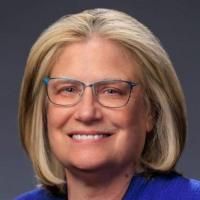Motor function and safety after allogeneic cord blood and cord tissue-derived mesenchymal stromal cells in cerebral palsy: An open-label, randomized trial.
Date
2022-07-10
Journal Title
Journal ISSN
Volume Title
Repository Usage Stats
views
downloads
Citation Stats
Abstract
Aim
To evaluate safety and motor function after treatment with allogeneic umbilical cord blood (AlloCB) or umbilical cord tissue-derived mesenchymal stromal cells (hCT-MSC) in children with cerebral palsy (CP).Method
Ninety-one children (52 males, 39 females; median age 3 years 7 months [range 2-5 years]) with CP due to hypoxic-ischemic encephalopathy, stroke, or periventricular leukomalacia were randomized to three arms: (1) the AlloCB group received 10 × 107 AlloCB total nucleated cells (TNC) per kilogram at baseline (n = 31); (2) the hCT-MSC group received 2 × 106 hCT-MSC at baseline, 3 months, and 6 months (n = 28); (3) the natural history control group received 10 × 107 AlloCB TNC per kilogram at 12 months (n = 31). Motor function was assessed with the Gross Motor Function Measure-66 (GMFM-66) and Peabody Developmental Motor Scale, Second Edition.Results
Infusions (n = 143) were well tolerated, with eight infusion reactions (three in the AlloCB group, five in hCT-MSC) and no other safety concerns. At 12 months, the mean differences (95% confidence intervals [CI]) between actual and expected changes in GMFM-66 score were AlloCB 5.8 points (3.4-8.2), hCT-MSC 4.3 (2.2-6.4), and natural history 3.1 (1.4-5.0). In exploratory, post hoc analysis, the mean GMFM-66 score (95% CI) of the hCT-MSC group was 1.4 points higher than natural history (-1.1 to 4.0; p = 0.27), and the AlloCB group was 3.3 points higher than natural history (0.59-5.93; p = 0.02) after adjustment for baseline Gross Motor Function Classification System level, GMFM-66 score, and etiology.Interpretation
High-dose AlloCB is a potential cell therapy for CP and should be further tested in a randomized, blinded, placebo-controlled trial.Type
Department
Description
Provenance
Subjects
Citation
Permalink
Published Version (Please cite this version)
Publication Info
Sun, Jessica M, Laura E Case, Colleen McLaughlin, Alicia Burgess, Natalie Skergan, Sydney Crane, Joan M Jasien, Mohamad A Mikati, et al. (2022). Motor function and safety after allogeneic cord blood and cord tissue-derived mesenchymal stromal cells in cerebral palsy: An open-label, randomized trial. Developmental medicine and child neurology. 10.1111/dmcn.15325 Retrieved from https://hdl.handle.net/10161/25707.
This is constructed from limited available data and may be imprecise. To cite this article, please review & use the official citation provided by the journal.
Collections
Scholars@Duke
Jessica Muller Sun

Laura Elizabeth Case
Laura E Case, PT, DPT, MS, PhD, PCS, C/NDT is a board-certified clinical specialist in pediatric physical therapy. She has dedicated her career to teaching, research in childhood-onset neuromusculoskeletal disorders, and to the lifelong treatment of people with childhood-onset neurological and neuromuscular disorders such as cerebral palsy, traumatic brain injury, Duchenne muscular dystrophy, spinal muscular atrophy, Pompe disease, myelodysplasia, juvenile rheumatoid arthritis, and brachial plexus injury.
She has been involved in numerous clinical trials for the treatment of disorders including Pompe disease and other metabolic disorders, cerebral palsy, Duchenne muscular dystrophy, and spinal muscular atrophy. Dr. Case has participated in the development of international guidelines for the management of Duchenne muscular dystrophy, Pompe disease, and other glycogen storage diseases.
She teaches and consults internationally, has worked on a number of Center for Disease Control (CDC) task forces, has served on numerous committees and task forces in the pediatric section of APTA, served two terms as NC State Representative to the APTA Section on Pediatrics, and is a member of the North American Pompe Registry Board of Advisors.
Colleen A McLaughlin

Joan Mary Jasien
Dr. Joan Mary Jasien completed a med-peds residency and neurodevelopmental neurology and became boarded in internal medicine, pediatrics, neurology and is board eligible for neurodevelopment. She is the co-director of the Multidisciplinary Spina Bifida and Cerebral Palsy Related Conditions Clinics and cares for children and adults with neurodevelopmental disabilities at Duke University Medical Center in Durham, NC, USA. Her research focus is on neurological aging in Spina Bifida and other neurodevelopmental disabilities.

Mohamad Abdul Mikati
Mohamad A. Mikati M.D., is the Wilburt C. Davison Professor of Pediatrics, Professor of Neurobiology, and Chief of the Division of Pediatric Neurology. Dr. Mikati’s clinical research has centered on characterization and therapy of pediatric epilepsy and neurology syndromes, describing several new pediatric neurological entities with two carrying his name (POSSUM syndromes # 3708 and 4468), developing novel therapeutic strategies for epilepsy and related disorders particularly Alternating Hemiplegia of Childhood, and applying cutting edge genetic and Magnetic Resonance Imaging techniques to drug resistant pediatric epilepsy. In the laboratory he has elucidated mechanisms of seizure related neuronal injury, particularly those related to the ceramide pathway, and demonstrated neuroprotective effects of several agents including erythropoietin. Most recently he has concentrated his laboratory research on the pathophysiology of ATP1A3 dysfunction in the brain as model for epilepsy and of Alternating Hemiplegia of Childhood. He has more than 290 peer reviewed publications, 400 abstracts 41 chapters one book and two booklets. He also has more than 10,497 citations in the literature with an h-index of 58 and an i-10index of 190. Dr. Mikati has written chapters on epilepsy and related disorders in the major textbooks of Pediatrics and Pediatric Neurology including Swaiman’s Pediatric Neurology and Nelson’s Pediatrics. Before joining Duke in 2008 he had completed his M.D. and Pediatric training at the American University of Beirut, his Neurology at the Massachusetts General Hospital, his Neurophysiology at Boston Children’s Hospital and had been on the Faculty at Harvard as Director of Research in the Epilepsy Program at Boston Children’s Hospital and then as Professor and Chairman, Department of Pediatrics, Founder and Director of the Adult and Pediatric Epilepsy Program at the American University of Beirut. Dr. Mikati has had several international leadership roles including being President of the Union of the Middle Eastern and Mediterranean Pediatric Societies, on the Standing Committee of the International Pediatric Association (IPA), Chair of the Strategic Advisory Group on Early Childhood Development of the IPA, Officer of the International Child Neurology Association, Consultant to UNICEF, WHO, and the American Board of Pediatrics. He was selected to organize and chair the American Epilepsy Society's Merritt-Putnam Symposium and was one of only two Pediatric Neurologists, initially chosen worldwide, on the WHO advisory committee for the International Classification of Disease. He has received several national and international honors including, among others, Merritt Putnam American Epilepsy Society Fellowship Award, Harvard Community Health Plan Peer recognition Award, Debs Research Award, Hamdan Award for contributions to Medicine, Hans Zellweger Award for contributions to Pediatric Neurology, Patient Choice Award and the Michael Frank Award for research and lifetime contributions to the field of Pediatric Neurology.

Jesse David Troy
I am the Associate Director of Graduate Studies for the Master of Biostatistics program. I am also a co-director of the Clinical Research Training Program. My current research is in cancer therapeutics and palliative care at the Duke Cancer Institute.
Unless otherwise indicated, scholarly articles published by Duke faculty members are made available here with a CC-BY-NC (Creative Commons Attribution Non-Commercial) license, as enabled by the Duke Open Access Policy. If you wish to use the materials in ways not already permitted under CC-BY-NC, please consult the copyright owner. Other materials are made available here through the author’s grant of a non-exclusive license to make their work openly accessible.
